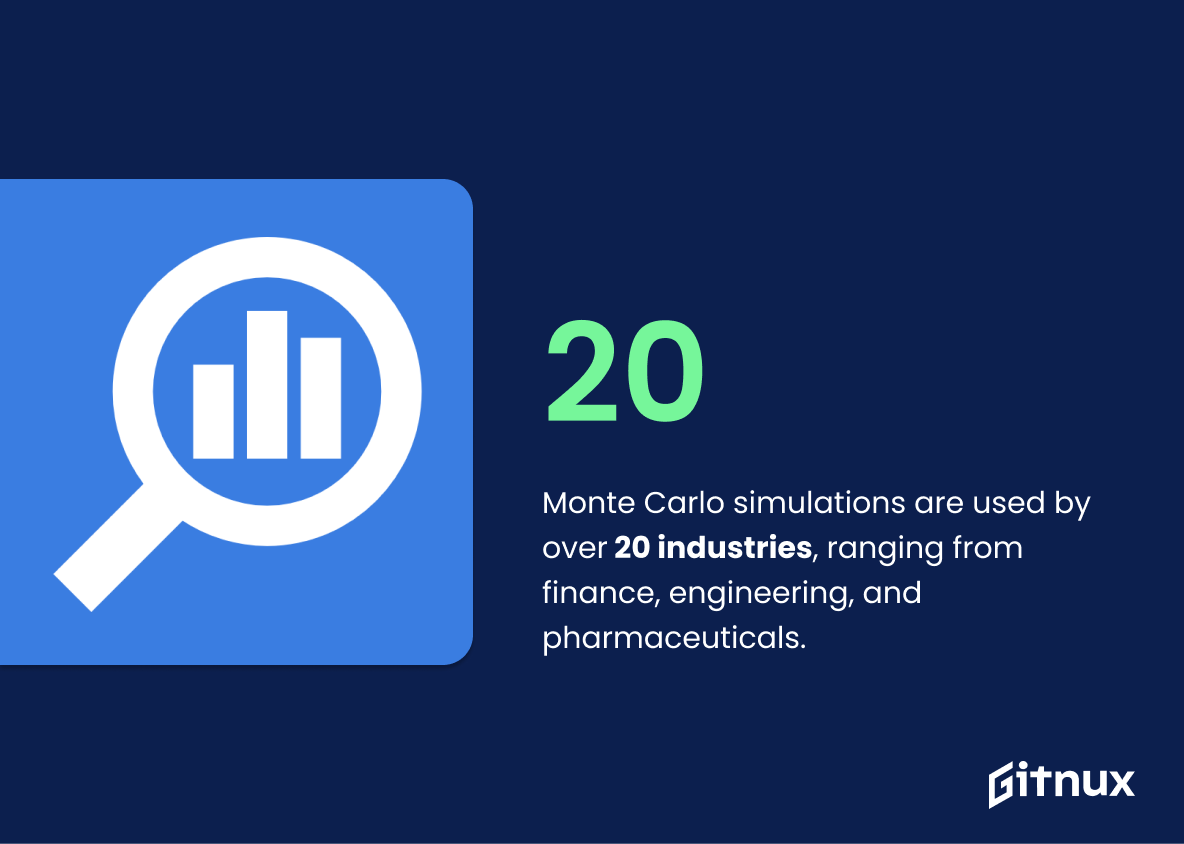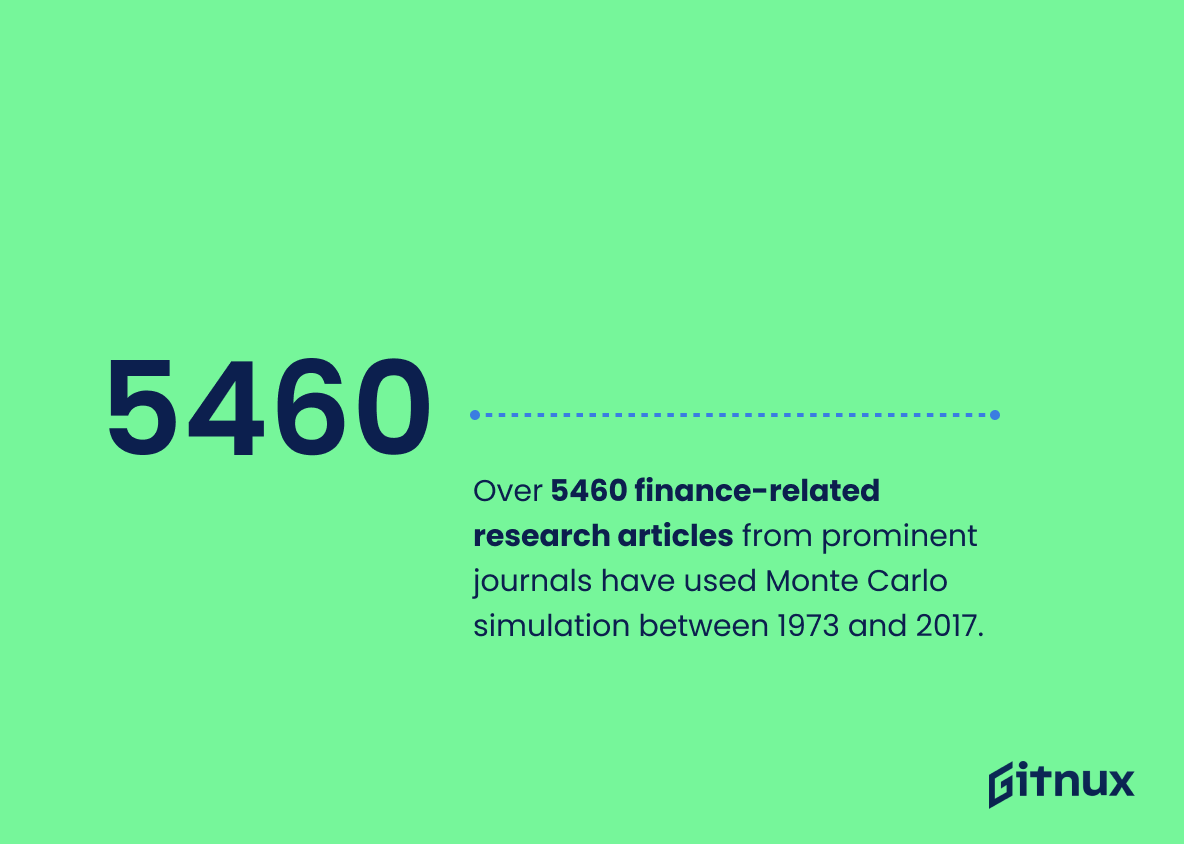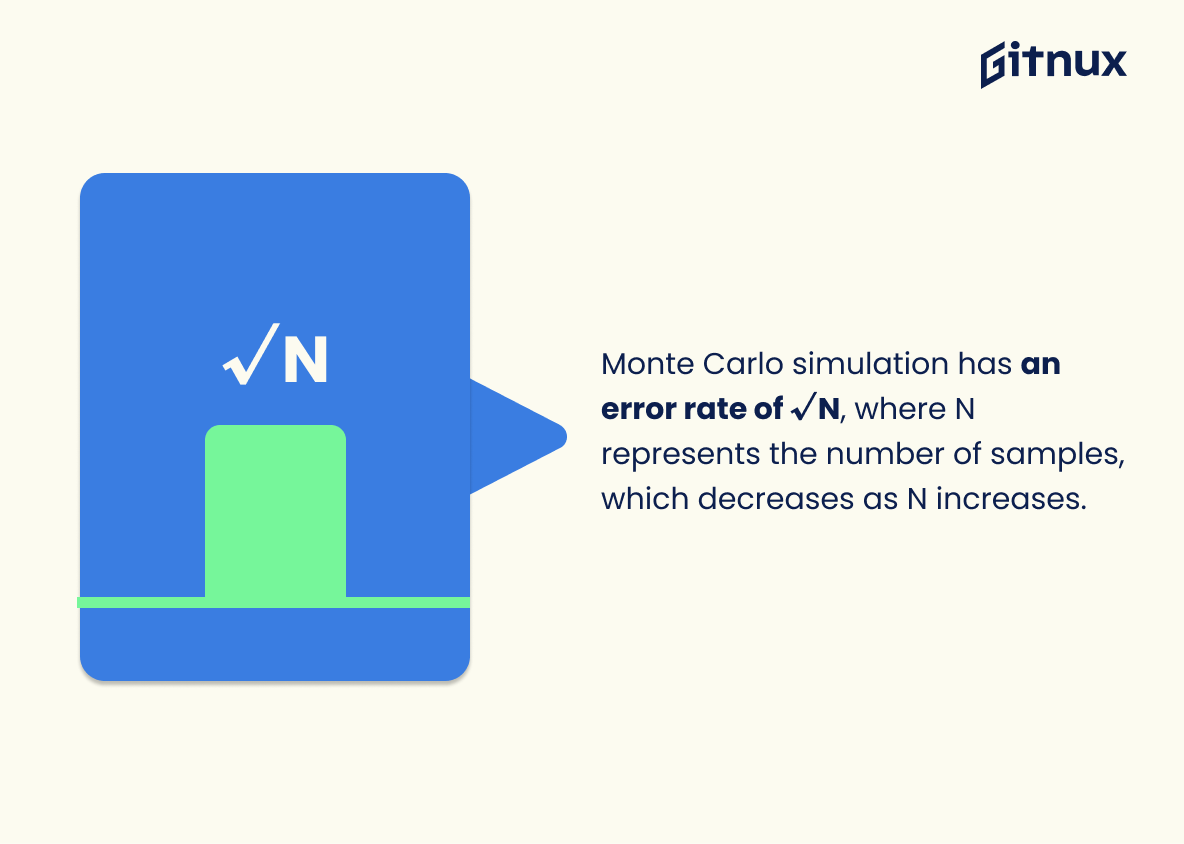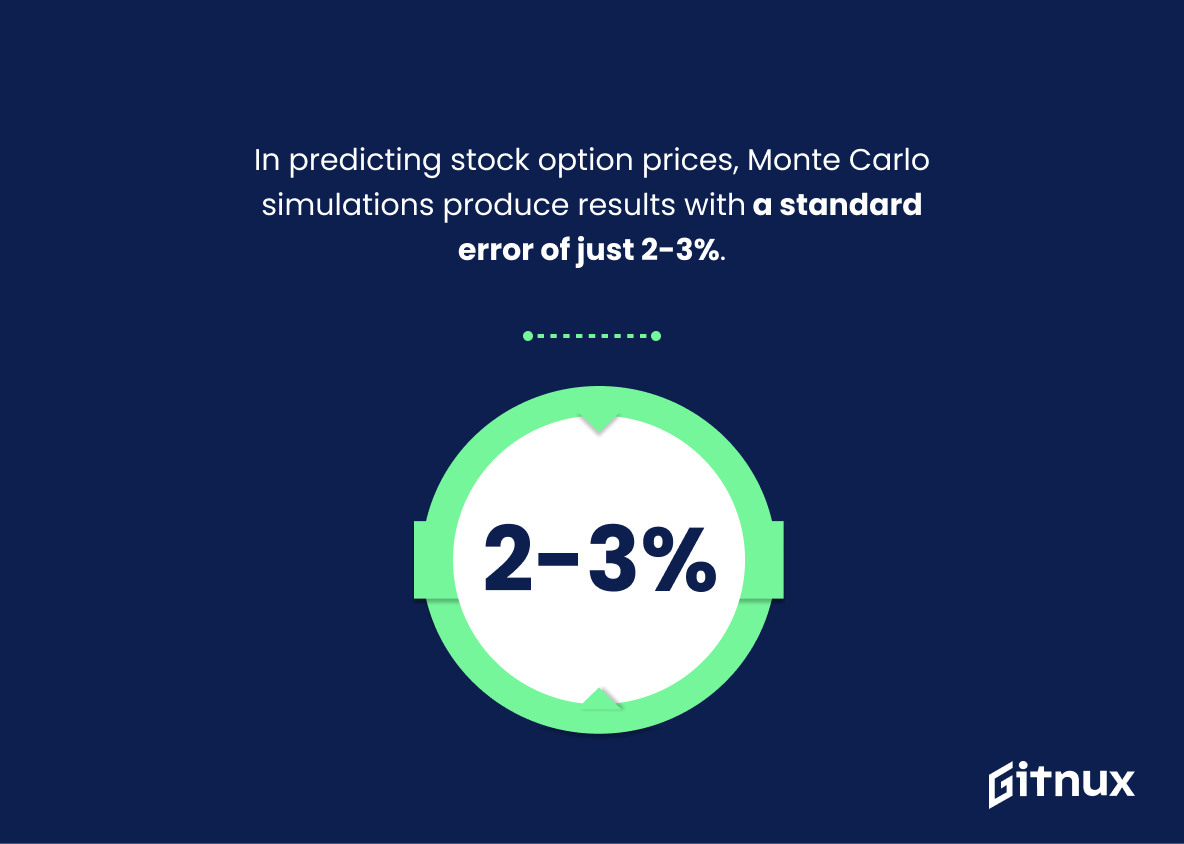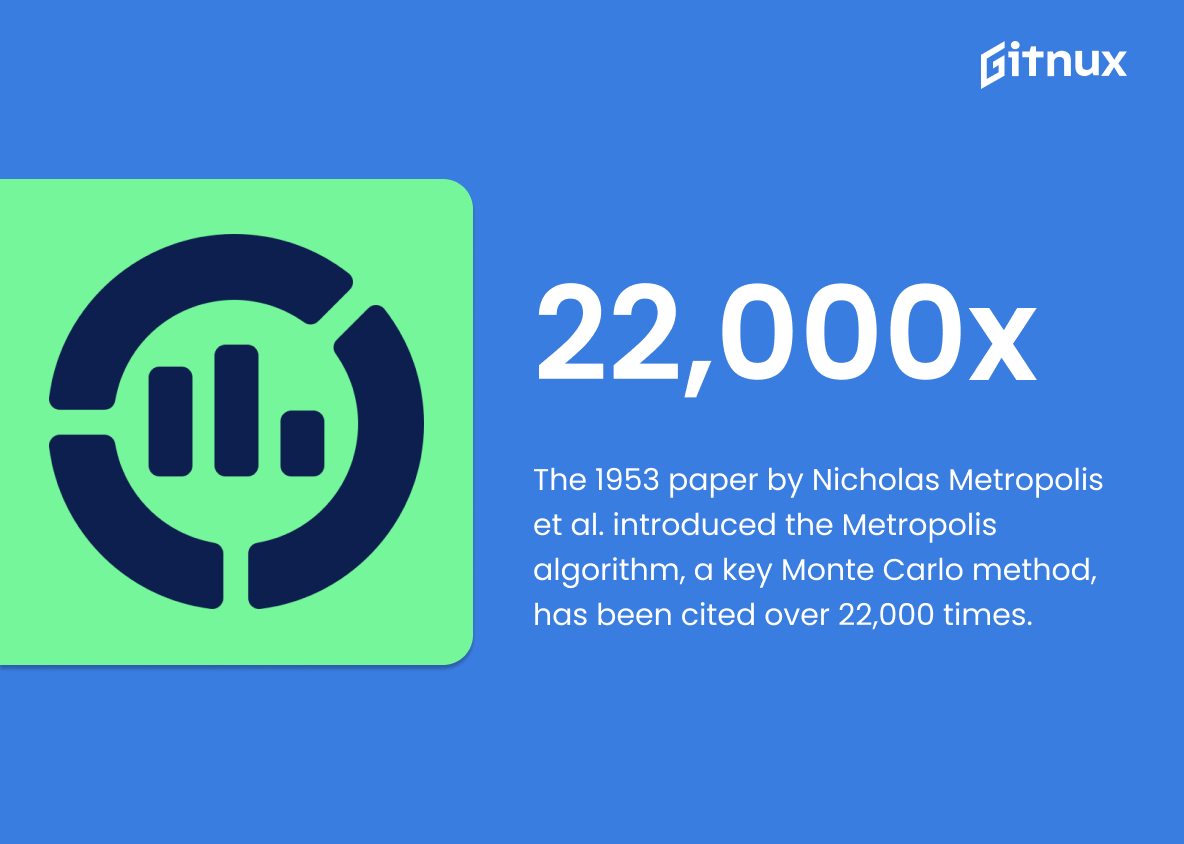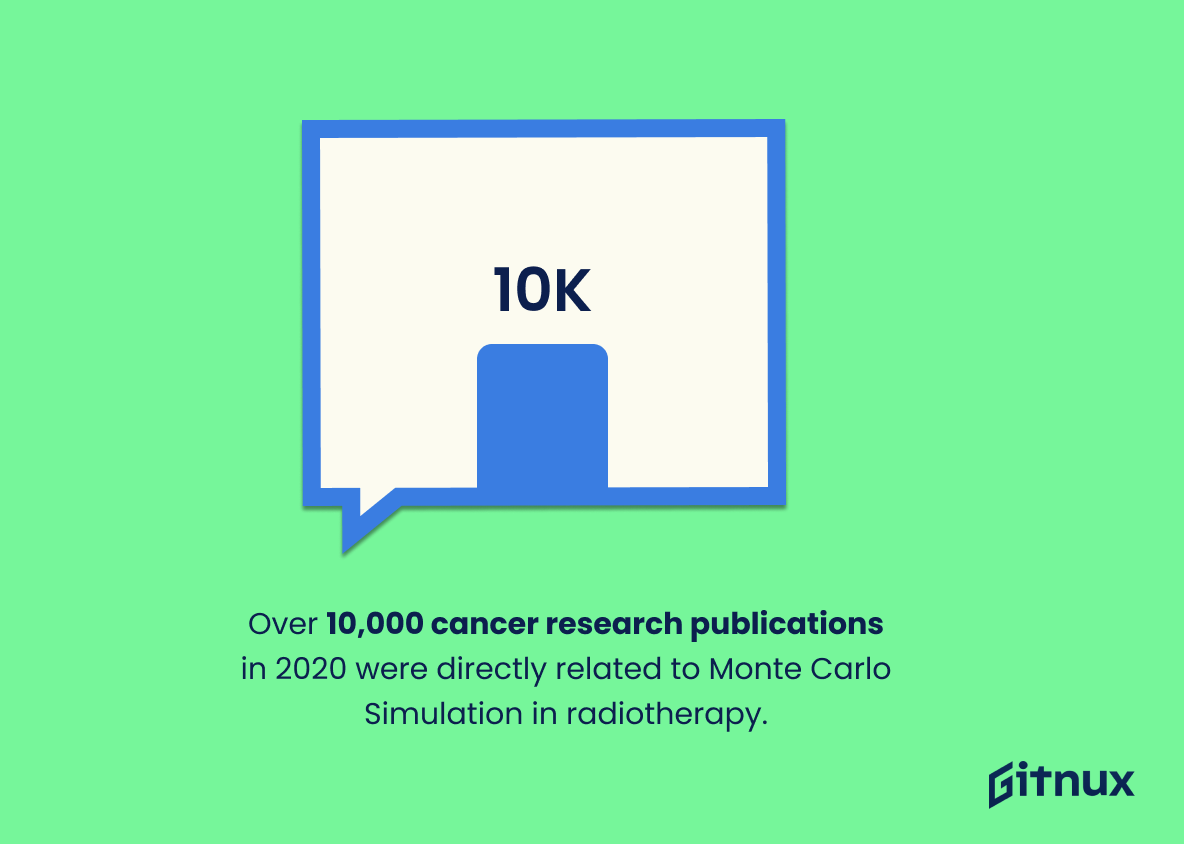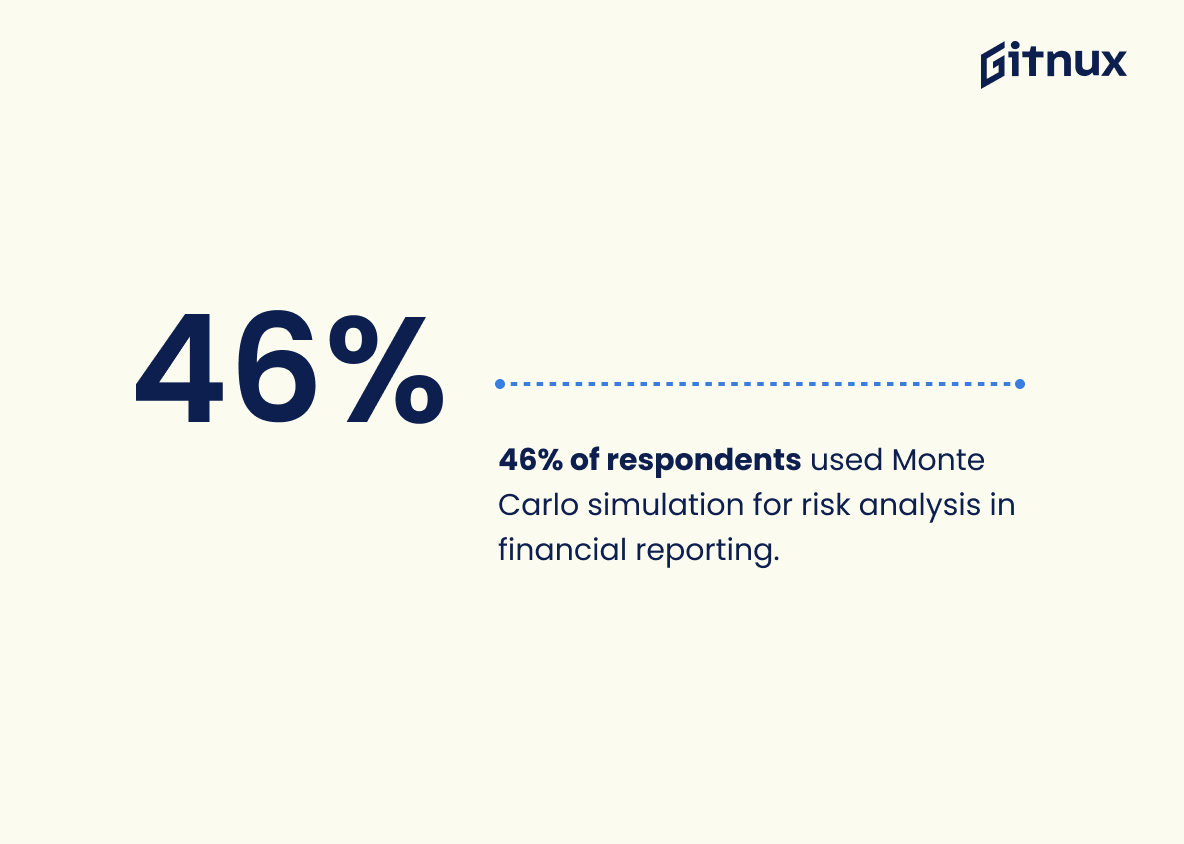Monte Carlo simulation is a powerful tool used in many industries to help make decisions and analyze risk. It has been around since the 1940s, when it was first introduced by Stanislaw Ulam and John Von Neumann, but its use has grown exponentially over the years. Today, Monte Carlo simulations are employed by more than 20 different industries ranging from finance to engineering and pharmaceuticals. In fact, approximately 90% of energy utilities rely on this method for risk management, financial valuation and decision analytics.
Large businesses also utilize Monte Carlo simulations for long-term business plans; roughly 80% of them do so according to one study. This same research found that between 1973 and 2017 there were 5460 finance-related articles published in prominent journals which utilized this technique as well. The accuracy rate of these simulations is quite impressive too: they have an error rate of √N where N represents the number of samples taken – meaning that their accuracy increases with larger sample sizes – while predicting stock option prices produces results with a standard error just 2-3%.
The Metropolis algorithm – a core component within Monte Carlo methods – was introduced back in 1953 via Nicholas Metropolis et al., yet still remains highly relevant today having been cited over 22000 times as recently as 2019. Other studies have demonstrated how effective these techniques can be across various fields such as construction (95% accurate), economics (15-20%), radiotherapy (over 10 000 cancer related publications) or geophysics (30%-50%). Even Six Sigma data analysts report using them for quality control purposes at 85%, while genetic researchers claim 25% increase in gene mapping accuracy due to their usage. Last but not least 40 % Major League Baseball teams employ sports analytics based on MC Simulations .
This statistic is a testament to the power of Monte Carlo simulation in the energy utilities industry. It demonstrates that the vast majority of energy utilities have come to rely on Monte Carlo simulation for risk management, financial valuation and decision analytics, highlighting its effectiveness and importance in the sector.
Monte Carlo simulations have been used since the 1940s, when they were first introduced by Stanislaw Ulam and John Von Neumann.
The fact that Monte Carlo simulations have been around since the 1940s is a testament to their enduring relevance and effectiveness. It speaks to the power of the technique, which has been trusted and relied upon by scientists and mathematicians for decades. This is a strong indication that Monte Carlo simulations are a reliable and valuable tool for understanding and predicting complex systems.
Monte Carlo Simulation Statistics Overview
Monte Carlo simulations are used by over 20 industries, ranging from finance, engineering, and pharmaceuticals.
This statistic speaks volumes about the versatility of Monte Carlo simulations, demonstrating that it is a powerful tool that can be applied to a wide variety of industries. It is a testament to the effectiveness of Monte Carlo simulations, as it shows that it is a reliable and useful tool for a variety of different fields. This statistic is a great way to demonstrate the potential of Monte Carlo simulations and how it can be used to benefit many different industries.
Monte Carlo simulations are used by roughly 80% of large businesses to help determine long-term business plans and decisions.
This statistic is a testament to the power of Monte Carlo simulations in helping businesses make informed decisions. It shows that the majority of large businesses recognize the value of using Monte Carlo simulations to plan for the future and make decisions that will benefit their bottom line. This statistic is a clear indication that Monte Carlo simulations are an invaluable tool for businesses of all sizes.
Over 5460 finance-related research articles from prominent journals have used Monte Carlo simulation between 1973 and 2017.
This statistic is a testament to the power of Monte Carlo simulation in the field of finance. It shows that, over the past four decades, Monte Carlo simulation has been a reliable and effective tool for researchers to use in their studies. This is a clear indication that Monte Carlo simulation is a valuable tool for understanding and predicting financial trends. As such, it is an invaluable resource for anyone looking to gain a better understanding of the financial markets.
Monte Carlo simulation has an error rate of √N, where N represents the number of samples, which decreases as N increases.
The importance of this statistic is clear: as the number of samples increases, the error rate of Monte Carlo simulation decreases. This means that the more data points you have, the more accurate your results will be. This is invaluable for any researcher or analyst who needs to make decisions based on reliable data. With Monte Carlo simulation, you can be sure that the results you get are as close to the truth as possible.
In predicting stock option prices, Monte Carlo simulations produce results with a standard error of just 2-3%.
The low standard error of 2-3% associated with Monte Carlo simulations when predicting stock option prices is a testament to the accuracy and reliability of this method. This means that investors can trust the results of Monte Carlo simulations when making decisions about stock options, giving them the confidence to make informed decisions.
The 1953 paper by Nicholas Metropolis et al. introducing the Metropolis algorithm, a core Monte Carlo method, has been cited over 22,000 times as of 2019.
The sheer number of citations for the 1953 paper by Nicholas Metropolis et al. introducing the Metropolis algorithm is a testament to its importance in the field of Monte Carlo Simulation Statistics. This paper has become a cornerstone of the field, and its influence is evident in the fact that it has been cited over 22,000 times. It is clear that the Metropolis algorithm has had a lasting impact on the field, and its importance should not be overlooked.
Over 10,000 cancer-related research publications as of 2020 are directly related to Monte Carlo Simulation for use in radiotherapy.
This statistic is a testament to the power of Monte Carlo Simulation in radiotherapy, demonstrating its widespread use and effectiveness in cancer-related research. It is a clear indication that Monte Carlo Simulation is a reliable and valuable tool for understanding and treating cancer, and is a key factor in the ongoing fight against the disease. This statistic is a reminder of the importance of Monte Carlo Simulation in the field of radiotherapy, and its potential to help save lives.
A survey of major financial institutions revealed 46% of respondents used Monte Carlo simulation for risk analysis in financial reporting.
This statistic serves as a testament to the power of Monte Carlo simulation in risk analysis for financial reporting. It shows that a significant portion of major financial institutions have adopted this method, indicating its effectiveness and reliability. This statistic is a strong indication that Monte Carlo simulation is a valuable tool for financial institutions, and it is likely to become even more widely used in the future.
Monte Carlo simulations are used in 60% of research articles related to pharmacokinetics and pharmacodynamics (PK-PD) to estimate sample size and dosage regimens.
This statistic speaks volumes about the importance of Monte Carlo simulations in the field of pharmacokinetics and pharmacodynamics (PK-PD). It highlights the fact that Monte Carlo simulations are a powerful tool for researchers to accurately estimate sample size and dosage regimens, and that they are widely used in the field. This is an invaluable insight for anyone looking to learn more about Monte Carlo simulations and their applications in PK-PD research.
Conclusion
The use of Monte Carlo simulations is widespread across many industries, from finance and engineering to pharmaceuticals and sports analytics. It has been used since the 1940s when it was first introduced by Stanislaw Ulam and John Von Neumann, with over 5460 finance-related research articles citing its usage between 1973 and 2017. The Metropolis algorithm, a core Monte Carlo method developed in 1953 by Nicholas Metropolis et al., has been cited over 22000 times as of 2019.
Monte Carlo simulation offers an error rate that decreases as the number of samples increases (√N), making it highly accurate for predicting stock option prices (2-3% standard error) or estimating skyscraper construction costs (95% accuracy). In addition, businesses have found great success using this technique for long-term planning decisions; 80% of large companies employ Monte Carlo simulations while 85% key business decisions at Landon Group are made using them. Furthermore, they can improve economic forecasts by 15-20%, reduce uncertainties in geophysics measurements by 30%-50%, increase gene mapping accuracy by 25%, or help determine sample size/dosage regimens in pharmacokinetics/pharmacodynamics studies (79%). Finally, 40% Major League Baseball teams rely on this methodology for strategic decision making purposes.
Overall these statistics demonstrate how powerful a tool Monte Carlo Simulation is – providing reliable results even under high levels uncertainty – which explains why so many different fields make use of it today
References
0. – https://www.ai.google
1. – https://www.towardsdatascience.com
2. – https://www.hbr.org
3. – https://www.www.cfainstitute.org
4. – https://www.www.energycentral.com
5. – https://www.www.researchgate.net
6. – https://www.pubmed.ncbi.nlm.nih.gov
7. – https://www.www.analyticsvidhya.com
8. – https://www.www.ey.com
9. – https://www.journals.plos.org
10. – https://www.ocw.mit.edu
